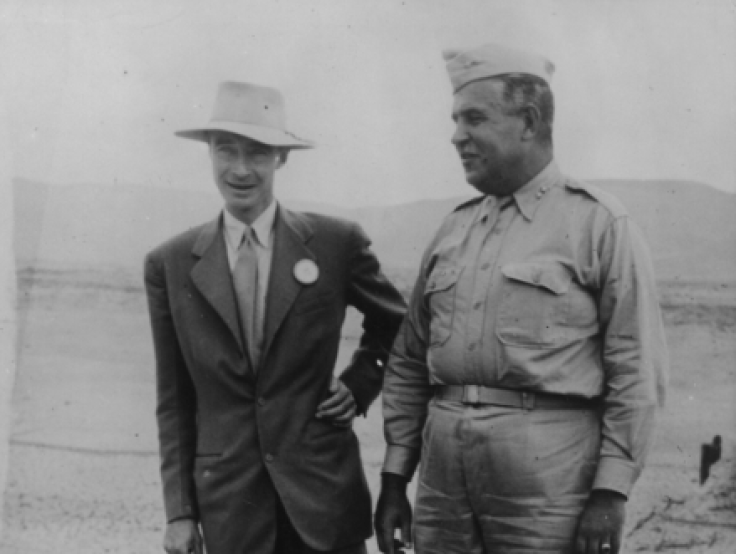Hiroshima Bombing: Leslie Groves, Manhattan Project’s Lead Engineer Behind Atomic Attack

Although the video of former President Harry Truman announcing the bombing of Hiroshima has become etched in history as one of the darkest moments of mankind, most people are unaware that the mastermind behind developing the atomic bomb which wrecked havoc in Japan was — Lieutenant General Leslie Groves.
On the 72nd anniversary of the atomic bombing of Hiroshima, here is a look at the man who oversaw the event which would go on to destroy generations born to this day, in the Japanese city.
Groves was a United States Army Corps of Engineers officer and the director of the Manhattan Project which was tasked with scientific, technical and process development, security and military intelligence of enemy activities, and researching and planning to use atomic power.
A Target Committee was appointed by Groves which was supposed to make a list of recommended targets for dropping atomic bombs. One of those targets was Hiroshima.
Read: Hiroshima Video Shows Never Before Seen Footage Of City
The official order that handed over the “special bomb” to General Carl Spaatz, who was in charge of Air Force operations in the Pacific, allowing him to execute it “as soon as the weather will permit visual bombing after about 3 August 1945” was signed by Groves, Doug-Long reported.
At a time when the entire world was stunned by the sheer cruelty of the United States, Groves justified Truman’s decision to bomb Hiroshima saying: “As far as I was concerned, his decision was one of noninterference - basically, a decision not to upset the existing plans.”
Groves was born in Albany, New York, on August 17, 1896. He completed his graduation from West Point and enrolled into the Army Corps of Engineers in 1918, Atomic Heritage reported.
After becoming the deputy to the Chief of Construction in 1940, Groves supervised the construction of camps, depots, air bases, munitions plants, hospitals, and airplane plants. He also oversaw the building of the Pentagon, completing it at a record time of less than a year.
Read: Hiroshima Bombing Anniversary: 71 Years On, Japan Calls For World Without Nuclear Weapons
His ability to undertake complex projects and single-handedly manage millions of people logically made him the best choice to lead the Manhattan Project. He continued to head the project until 1947 after which the reigns to atomic energy affairs were handed over to the Atomic Energy Commission.
His demeanor has been often described as stubborn, egotistic, intelligent and critical. He was a perfectionist who was ready to do whatever it takes to succeed in every mission that he undertook.
Colonel Kenneth D. Nichols, the former district engineer of the Manhattan Engineer District, wrote of Groves: "First, General Groves is the biggest S.O.B. I have ever worked for. He is most demanding. He is most critical. He is always a driver, never a praiser. He is abrasive and sarcastic. He disregards all normal organizational channels.”
“He is extremely intelligent. He has the guts to make timely, difficult decisions. He is the most egotistical man I know. He knows he is right and so sticks by his decision. He abounds with energy and expects everyone to work as hard, or even harder than he does... if I had to do my part of the atomic bomb project over again and had the privilege of picking my boss, I would pick General Groves," added Nichols, according to the Atomic Heritage report.
After being relieved from the Manhattan Project, Groves was promoted to the status of Temporary Lieutenant General in January 1948. However, he took voluntary retirement after just a month and served as the vice president of the Sperry Rand Corporation and later, as president of the West Point alumni association. He died on July 13, 1970.
© Copyright IBTimes 2024. All rights reserved.












